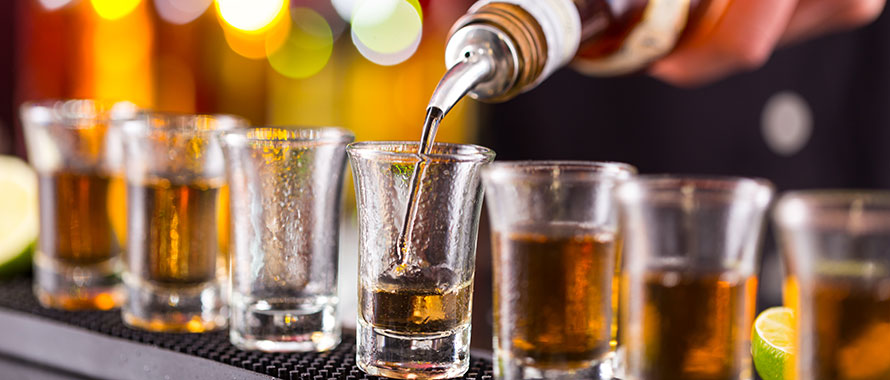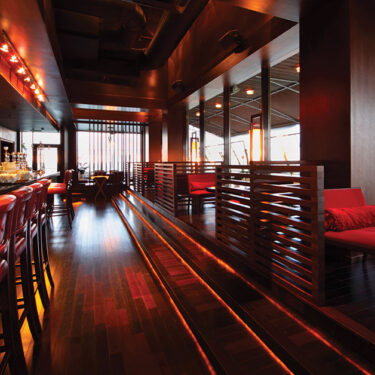The liquor license of a Kelseys Original Roadhouse franchise in Huntsville, Ontario, was recently suspended over allegations that staff overserved alcohol to a customer before a fatal car crash. On Feb. 14, the Alcohol and Gaming Commission of Ontario announced the 60-day suspension based on alleged liquor license violations stemming from a Nov. 4, 2022, incident in which a customer consumed 18 shots of liquor in less than four hours.
Featured Solutions
“Drinking eighteen shots is excessive,” said James Ciavaglia, Senior Underwriter, Commercial Insurance, Burns & Wilcox, Ottawa, Ontario. “A company like Kelseys, which is a very big franchise establishment here, should already have procedures in place to prevent this type of situation. Ultimately, it comes down to how management enforces those procedures and the culture within that establishment. At the end of the day, all of these situations are going to fall back on the restaurant, whether they are liable or not.”
In addition to the financial impact of being unable to sell alcohol during a suspension, a business could also be sued over this type of incident, said Jackson Hastings, Underwriter, Commercial Insurance, Burns & Wilcox, Charleston, South Carolina. When that occurs, an establishment’s Liquor Liability Insurance can help pay for legal defense, third-party personal injuries and property damage, legal settlements and other costs.
“If this individual’s family members sued the establishment for serving irresponsibly, especially because it ended in loss of life, these kinds of claims can reach the full limits of a policy,” she said. “If they did not have Liquor Liability Insurance, that could be millions of dollars they are expected to pay out. That could put them out of business.”
Overserving allegations frequent, costly
Allegations of overserving and other liquor license violations appear in the news regularly, according to Ciavaglia. In Dothan, Alabama, a bar is being sued by the families of two individuals who were killed by a drunk driver in 2023 after the driver was allegedly overserved at the establishment, WDHN reported on March 6. Delta Airlines is facing a wrongful death lawsuit accusing the company of overserving a man during a 2022 flight before he fatally struck his wife with his car in the airport parking lot, the New York Post reported on Feb. 12.

If this individual’s family members sued the establishment for serving irresponsibly … these kinds of claims can reach the full limits of a policy. If they did not have Liquor Liability Insurance, that could be millions of dollars they are expected to pay out.
In London, Ontario, a woman sued a food services company last year for allegedly overserving her alcohol before she was involved in an impaired driving crash in 2019 that caused $10 million in damages after she drove into a house, breaking a gas line, the Independent reported. Beyond drunk driving accidents, bars can also be sued for overserving incidents such as falls or physical altercations.
“We always hear a similar story,” Ciavaglia explained, “a restaurant patron is served alcohol and proceeds to leave the establishment, either driving or on foot, and an incident occurs. It is an unfortunately frequent scenario.”
Bars and restaurants should have policies in place to prevent overserving, including training staff on safe liquor-serving practices — which may be required in some areas. According to Craft Serving, alcohol server training regulations vary by state, with some states requiring specific training for staff and others offering voluntary programs.
The incident in Ontario involving a man being served 18 shots is a strong example of the importance of this training, Hastings said. “If they had proper alcohol awareness training that required everyone serving alcohol to be aware of the signs of intoxication, someone would have never been served 18 shots of liquor in that short amount of time,” she said. “They could have identified the signs of extreme intoxication. If you serve someone 18 shots of liquor over less than four hours, and they leave in a car, it is unsafe.”

If you serve someone 18 shots of liquor over less than four hours, and they leave in a car, it is unsafe.
In the U.S., Commercial General Liability (CGL) Insurance policies specifically exclude alcohol-related claims, making Liquor Liability Insurance important for any establishment that serves alcohol. In Canada, CGL Insurance policies for businesses that serve alcohol are tailored to include Liquor Liability Insurance. In some cases, establishments need an endorsement to cover assault and battery claims.
Even if a bar or restaurant followed safe serving guidelines and was not at fault for an incident, they could still face legal action and need to pay costly defense fees. “They will have to defend, and that is why they have insurance,” Ciavaglia said.
Law proposed to lower liquor liability limit requirements
In South Carolina, establishments that serve alcohol are currently required to carry a minimum of $1 million in Liquor Liability Insurance limits, but some lawmakers are aiming to lower that requirement to make the coverage more affordable for smaller establishments like the VFW. According to WCIV, a proposal is being considered that would reduce that minimum limit by half if establishments meet certain criteria; it would also set up a liquor liability fund to assist with court-ordered damages, the outlet reported.
These proposed changes have generated interest, Hastings said, but establishment owners should keep in mind that higher limits are generally recommended due to the potential for serious liquor-related losses. “If you are going to have a Liquor Liability Insurance policy, you should go with the highest limits they are going to offer because situations like these can be full-limit claims,” she said. “If there is loss of life in an accident, a $500,000 limit is usually not going to cover something that large. In these scenarios, it is safest to get those higher limits. It is worth it in the long run.”
In South Carolina, in particular, Liquor Liability Insurance rates have been driven up in recent years and many carriers have pulled out of the market, WYFF reported last May. “For a lot of establishments, the highest limit they can find is $500,000 but they are required by law to have $1 million limits,” Hastings said. “Many of the carriers are not offering the limits they are required to have. Our hands are tied because we do not have markets willing to come into this space because of the way the laws are.”
According to Hastings, the state also allows any establishment to be pulled into a liquor liability lawsuit, even if a patron visited multiple bars in a row and only one bar overserved the customer. “You could have the cleanest record, no losses, a great establishment that does everything they are supposed to do, and they still may not be able to get coverage,” she said. “It is not because they are not a good risk, but the insurers do not want to be in that state. They do not want to be brought in on a claim that they have nothing to do with.”
In Canada, liability limits for Liquor Liability Insurance often begin at $2 million and go up to $5 million, Ciavaglia said. “[The highest limit] is always what we recommend,” he said. “As claims progress, they tend to get larger and larger.”
Mitigating risks through training, culture of safety
While businesses that serve alcohol need to take precautions throughout the year to prevent overserving, some days may be riskier than others. St. Patrick’s Day is the third most popular “drinking day” of the year and is often associated with a spike in drunk driving accidents, according to the Palm Beach Post, which noted that spring break crowds also bring increased risks. For bar owners, risk mitigation is paramount, Hastings said.
“Everybody in the establishment who is going to be serving liquor should know what to be looking for, and how important that is,” she said. “Make sure it is emphasized that you want to do this right because of how important it is.”
In addition to training staff, restaurants can install video cameras to have a record of events in case of an incident, keep receipts and table reservation information, and discourage serving shots, Ciavaglia said. “The best way for these establishments to defend themselves to prevent future losses is through continuous training, well-documented and enforced procedures, and management’s ultimate commitment to a culture that promotes a safe and secure environment,” he said. “Make sure you have the proper insurance in place, including high enough limits to protect yourself.”






